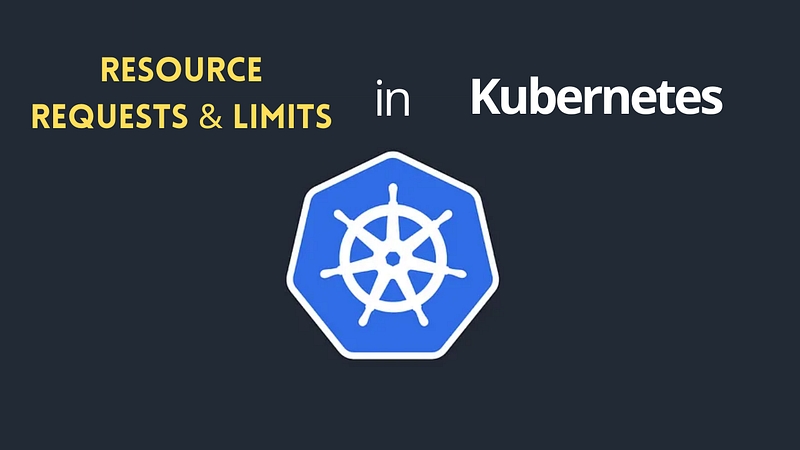Understanding Kubernetes: Part 22 Kubernetes Resource Requests & Limits

📢 If you’ve been following our Kubernetes series 2025, welcome back! For new readers, check out Part 21: CNI
What are Resource Requests & Limits in Kubernetes?
In Kubernetes, resource requests and limits define how much CPU and memory a container can use. This ensures fair resource allocation among workloads and prevents any single pod from consuming excessive resources, which could impact other applications running in the cluster.
Requests: The minimum amount of CPU/memory guaranteed to a container. The scheduler uses this value to place the pod on a suitable node.
Limits: The maximum amount of CPU/memory a container can use. If a container exceeds this, Kubernetes restricts it (for CPU) or terminates it (for memory).
For example:
If you have a microservice that processes user requests, you can set CPU and memory requests to ensure it has enough resources to function and limits to prevent it from consuming excessive resources during traffic spikes.
Why Use Resource Requests & Limits?
✅ Efficient Resource Management: Prevents resource hogging and ensures optimal cluster utilization. ✅ Better Performance: Guarantees that critical applications always have the required resources. ✅ Avoids OOM (Out of Memory) Kills: Helps prevent crashes due to excessive memory usage. ✅ Fair Scheduling: Ensures the Kubernetes scheduler places workloads appropriately based on available resources.
In My Previous Role
As a Senior DevOps Engineer, I ensured all Kubernetes deployments had proper resource requests and limits to avoid performance degradation. For example, in a high-traffic Node.js API, I set:
Requests: Ensured the service always had enough resources to handle base traffic.
Limits: Prevented excessive resource usage, ensuring stability during peak loads.
Monitoring: Used Prometheus + Grafana to fine-tune limits based on actual usage.
Example YAML for Resource Requests & Limits
apiVersion: v1
kind: Pod
metadata:
name: resource-demo
spec:
containers:
- name: my-app
image: my-app:latest
resources:
requests:
memory: "256Mi"
cpu: "250m"
limits:
memory: "512Mi"
cpu: "500m"Explanation:
requests.memory: “256Mi” → The container is guaranteed 256MiB of memory.
requests.cpu: “250m” → The container is guaranteed 0.25 vCPU.
limits.memory: “512Mi” → The container cannot exceed 512MiB of memory.
limits.cpu: “500m” → The container cannot exceed 0.5 vCPU.
This setup ensures optimal performance while preventing excessive resource usage.
🚀 Ready to Master Kubernetes?
Take your Kubernetes journey to the next level with the Master Kubernetes: Zero to Hero course! 🌟 Whether you’re a beginner or aiming to sharpen your skills, this hands-on course covers:
✅ Kubernetes Basics — Grasp essential concepts like nodes, pods, and services. ✅ Advanced Scaling — Learn HPA, VPA, and resource optimization. ✅ Monitoring Tools — Master Prometheus, Grafana, and AlertManager. ✅ Real-World Scenarios — Build production-ready Kubernetes setups.
🎓 What You’ll Achieve
💡 Confidently deploy and manage Kubernetes clusters. 🛡️ Secure applications with ConfigMaps and Secrets. 📈 Optimize and monitor resources for peak performance.
🔥 Start Learning Now: [Join the Master Kubernetes Course](https://cloudops0.gumroad.com/l/k8s)
Don’t miss your chance to become a Kubernetes expert! 💻✨
🚀 Stay ahead in DevOps and SRE! 🔔 Subscribe now and never miss a beat on Kubernetes and more. 🌟
Last updated